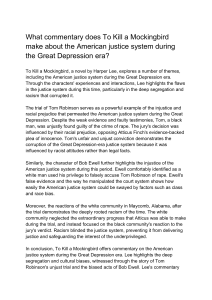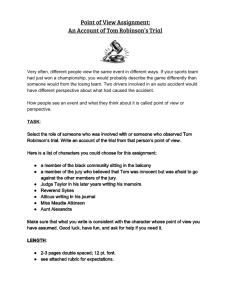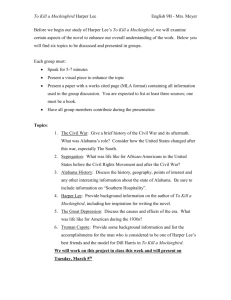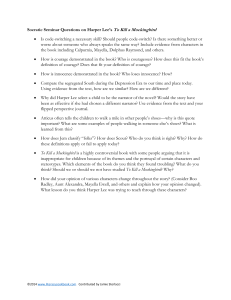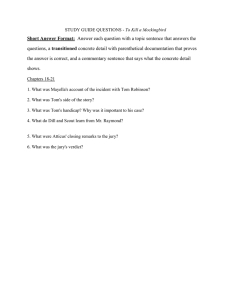How does Harper Lee use the character of Tom Robinson to expose the injustices of the legal and political systems in To Kill a Mockingbird
advertisement
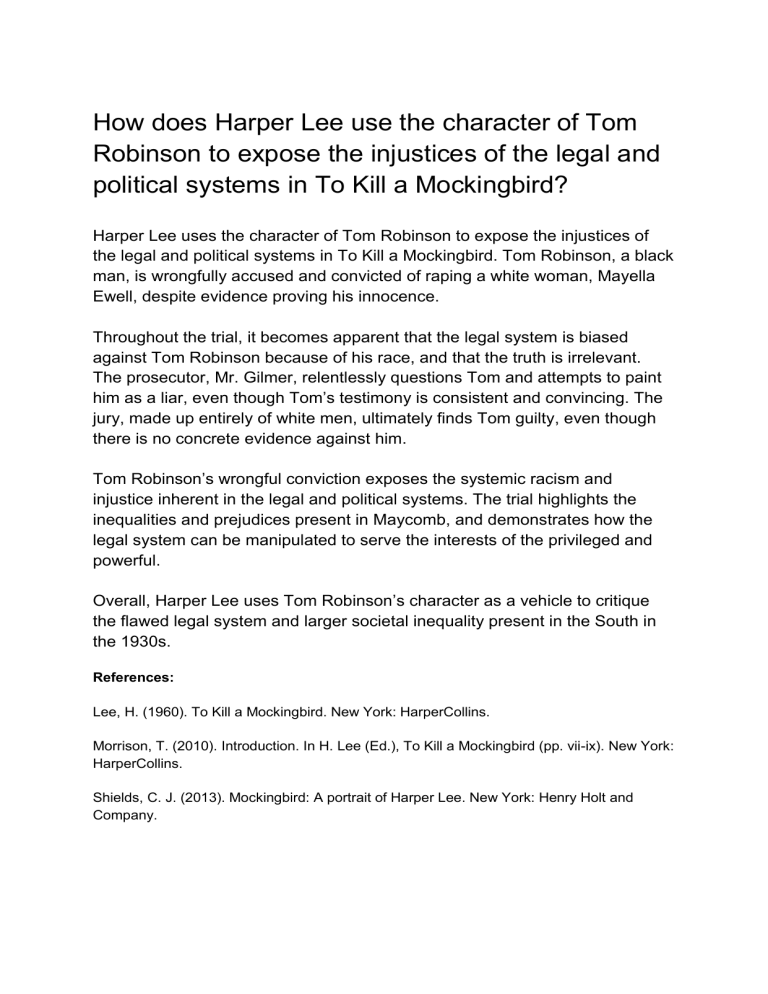
How does Harper Lee use the character of Tom Robinson to expose the injustices of the legal and political systems in To Kill a Mockingbird? Harper Lee uses the character of Tom Robinson to expose the injustices of the legal and political systems in To Kill a Mockingbird. Tom Robinson, a black man, is wrongfully accused and convicted of raping a white woman, Mayella Ewell, despite evidence proving his innocence. Throughout the trial, it becomes apparent that the legal system is biased against Tom Robinson because of his race, and that the truth is irrelevant. The prosecutor, Mr. Gilmer, relentlessly questions Tom and attempts to paint him as a liar, even though Tom’s testimony is consistent and convincing. The jury, made up entirely of white men, ultimately finds Tom guilty, even though there is no concrete evidence against him. Tom Robinson’s wrongful conviction exposes the systemic racism and injustice inherent in the legal and political systems. The trial highlights the inequalities and prejudices present in Maycomb, and demonstrates how the legal system can be manipulated to serve the interests of the privileged and powerful. Overall, Harper Lee uses Tom Robinson’s character as a vehicle to critique the flawed legal system and larger societal inequality present in the South in the 1930s. References: Lee, H. (1960). To Kill a Mockingbird. New York: HarperCollins. Morrison, T. (2010). Introduction. In H. Lee (Ed.), To Kill a Mockingbird (pp. vii-ix). New York: HarperCollins. Shields, C. J. (2013). Mockingbird: A portrait of Harper Lee. New York: Henry Holt and Company.
